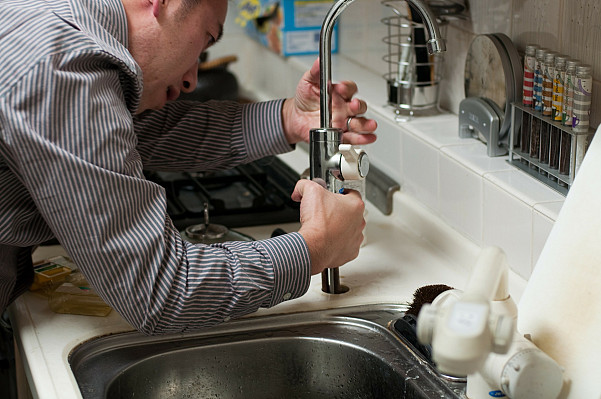Basic Plumbing Tips for Homeowners
 Dishwashers, Ice Makers and Washing Machines
Dishwashers, Ice Makers and Washing Machines
- Run your dishwasher and washing machine at night or at off-peak times to conserve water temperature and pressure.
- Check all supply hoses for bulges, leaks or signs of weakness.
- Clean out the lint trap, if you have an older washing machine, and put a wire trap or a piece of pantyhose over the end of the hose that drains the washer.
- Check to make sure that all connections are tight and leak free.
Garbage Disposals
- Never put hard-to-grind waste into the disposal (e.g., chicken skins, bones, carrots, celery or banana peels); they will clog the drain.
- Run cold water down the drain for about 15 seconds before and after using the disposal to flush waste down the main line.
- Turn on the disposal before adding food waste.
Drains
- Don’t pour fats or cooking oils down the drain — they will harden in the pipes and create clogs.
- Make sure that all drains have strainers to prevent hair, soap and debris from clogging the drain lines.
Floors, Basement and Walls
- Slow floor drains should be snaked to make sure they will carry away water fast if there is a flood.
- If you have a sump pump, make sure it works by pouring a few buckets of water into the sump pit. The pump should quickly turn on, discharge the water, and then shut off without any problems.
- Install a battery-operated flood alarm.
- Check around the base of the toilet for signs of water damage (rolled vinyl, black or white stains, etc.)
- Check for leaky or loose wall tiles by pressing on them where they come in contact with the bathtub. If the wall is soft, there might be some water damage.
Outdoors
- Make sure yard drains, gutters and downspouts are cleaned out, open, and free of debris.
- Check faucets and hose bibs to make sure water flows freely. If an outdoor faucet drips or if it leaks inside your home the first time the hose is turned on, you may have had a frozen pipe that cracked and needs to be replaced.
- Standing water is a common problem caused by a leaky or broken pipe. Excess water in a yard might come from a damaged sewer line and contain waste from the home. This is unhealthy for children and pets, and is a breeding ground for insects and germs.
Toilets
- Never flush cotton swabs, cotton balls, hair, facial scrub pads, diapers, wipes, sanitary products or similar items down the toilet. These items will not easily dissolve and are responsible for most clogs.
- Check toilets for hidden leaks. Add six drops of food coloring to the toilet tank. If the toilet is leaking, color will appear in the bowl within 30 minutes.
- Inspect the tank and bowl for cracks or leaks.
- Make sure toilets flush properly. If the handle must be held down for a thorough flush or jiggled to stop the water from running, you may need to replace worn tank parts. They're inexpensive and you'll notice a lower water bill once they're replaced.
- Check to see how fast the toilet flushes.
Valves
- Regularly exercise (open and close) water supply valves under sinks and toilets to prevent them from sticking.
Water Heater
- Check the temperature setting on the water heater. It should be set no higher than 120°F to prevent scalding and reduce energy use.
- Carefully drain several gallons from the water heater tank to flush out corrosion causing sediment, which reduces heating efficiency and shortens the life of the heater.
- Check the date of your water heater. The first four digits of the serial number on the water heater are the month and year. Any heater over 12-15 years old is a candidate to be replaced.
- Make sure flammables are not stored near the water heater or furnace.
- A rusty water tank is a sign of impending problems. Call a licensed plumber to inspect it ASAP.
Looking for a Pro? Call us (866) 441-6648

Plumbing Average Costs
Plumbers Experiences

Do Your Homework Before You Have A New Water Heater Installed

Gas Line Installation Made Simple

Fast Hot Water Heater Replacement ... On A Weekend!
Top Cities Covered by our Plumbers
Austin
| Boston
| Charlotte
| Chicago
| Columbus
| Dallas
| Denver
| Detroit
| El Paso
| Fort Worth
| Houston
| Indianapolis
| Los Angeles
| Memphis
| Nashville
| New York
| Philadelphia
| Phoenix
| Portland
| San Antonio
| San Diego
| San Francisco
| San Jose
| Seattle
| Washington


